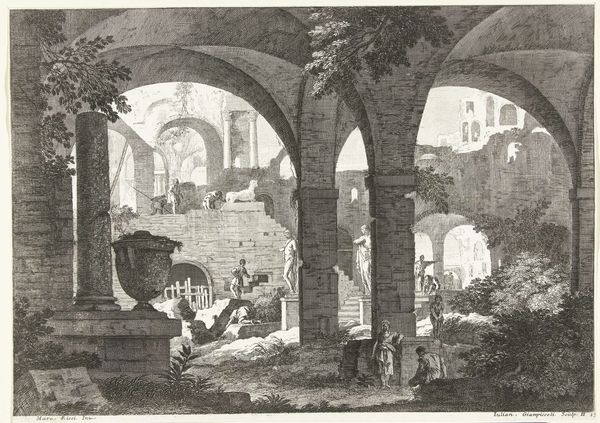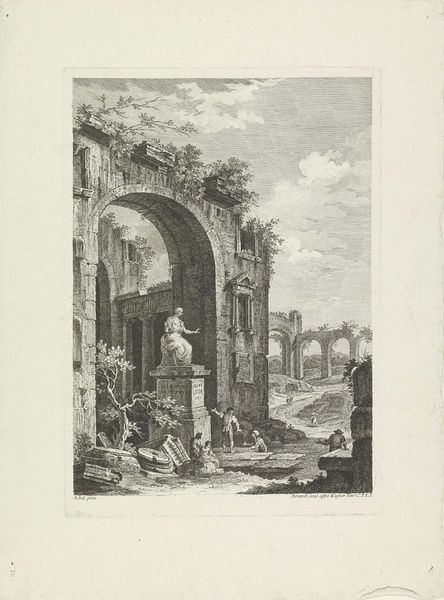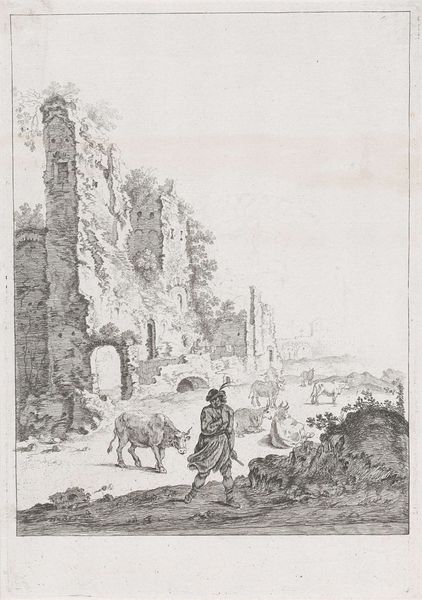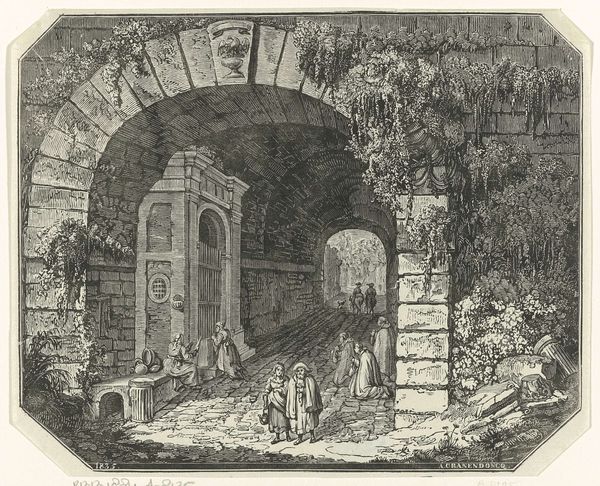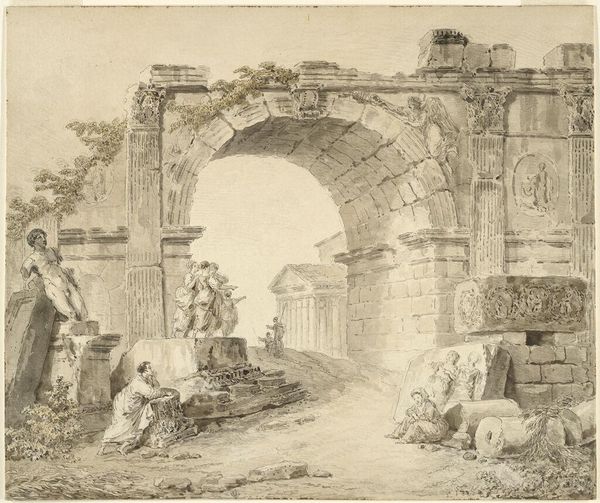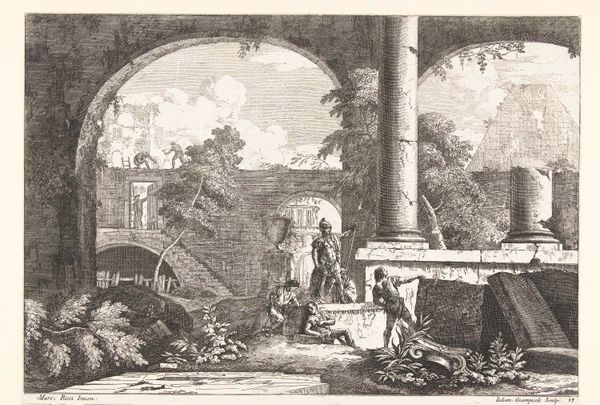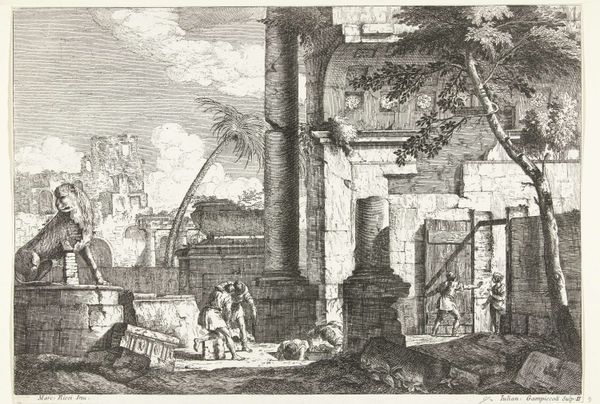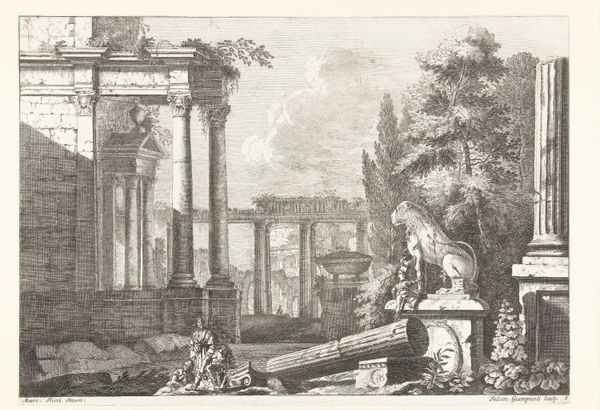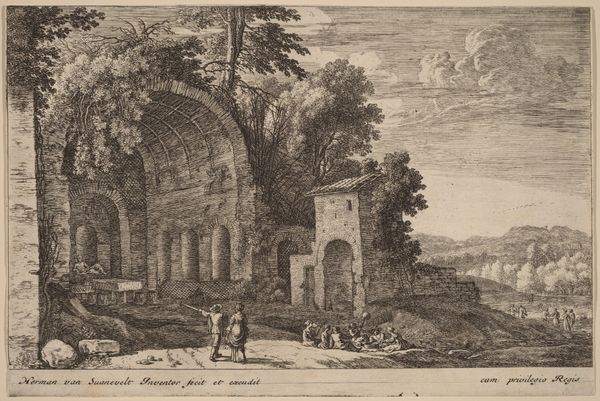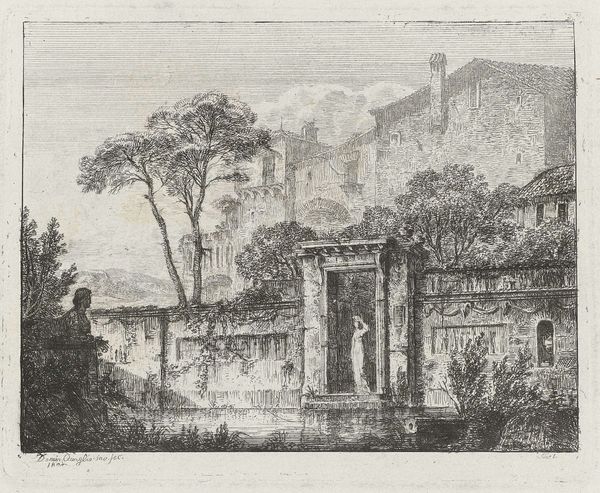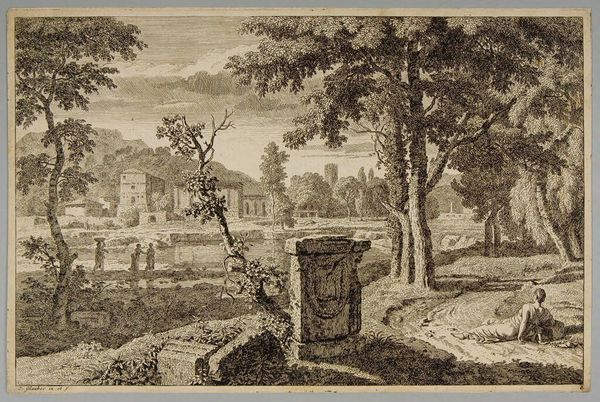
print, etching, engraving, architecture
#
baroque
# print
#
etching
#
old engraving style
#
landscape
#
line
#
cityscape
#
engraving
#
architecture
Dimensions: height 431 mm, width 318 mm
Copyright: Rijks Museum: Open Domain
Marco Ricci etched this landscape with palace ruins sometime between the late 17th and early 18th centuries. What dominates the scene are the crumbling vestiges of classical architecture. Notice the reclining nude figure atop a ruined structure and the sphinx nearby. The motif of ruins, so prevalent here, speaks to a fascination with the past and the transience of human achievement. This interest extends back to the Renaissance, and it is no coincidence that ruins often feature in the backgrounds of Renaissance paintings, suggesting a meditation on time. The sphinx has its roots in ancient Egypt and Greece. It initially served as a guardian figure, embodying wisdom and power, often placed at the entrances of temples and tombs. But its meanings have transformed over time, appearing in art, literature, and even psychoanalysis, representing enigma and the subconscious. The emotional weight of the image comes from the contemplation of mortality and the cyclical nature of civilization. The psychological impact lies in its ability to awaken a deep sense of melancholy, a recognition of the ephemeral nature of existence. The ruin motif continues to resurface, reflecting an ongoing dialogue between past and present.
Comments
No comments
Be the first to comment and join the conversation on the ultimate creative platform.
